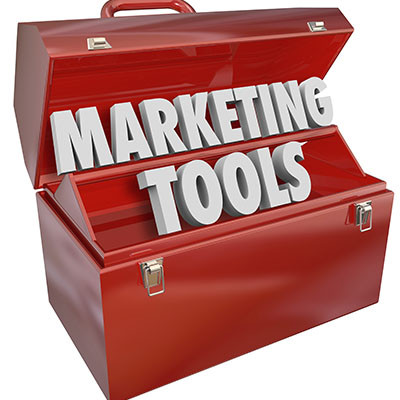Home
About Us
IT Services
Understanding IT
- Understanding General Data Protection Regulation Compliance
- Understanding Automation
- Understanding Ransomware
- Understanding Shadow IT
- Understanding Your Virtual Identity
- Understanding the Modern Office
- IT Threat Glossary
- Understanding Business Continuity
- Windows Server 2003: End of Life
- Understanding the Internet of Things
- Understanding Network Security
- Understanding SOX
- Understanding BYOD
- Understanding PCI DSS
- Windows XP End of Life
- Understanding HIPAA
- Cloud Computing
News
Blog
Support
Contact Us
(713) 979-2090
- Register
- Login
Zinc Blog
Have you noticed the profound impact modern technology has on your business? Do you want to leverage it to your advantage? If you want to surpass your competition, then you’ll need every advantage out there. Let’s look at some of the technologies that your business can implement to give itself a leg up through marketing efforts.
Smartphones are pretty ubiquitous nowadays, and they come packed with more features than most people know about, let alone understand. For instance, Wi-Fi calling… what is it, and what does it do to help you communicate?
Let’s get into it.
You’ve probably noticed that Google searches are sometimes a little different these days. Depending on what you search for, sometimes Google will attempt to provide an AI-generated answer. A lot of Googlers have noticed that sometimes these answers get a little wacky. What’s going on? Why isn’t Google just taking users to websites like they used to? And what is the impact of all this AI stuff?
Laptops are nothing new for businesses. In fact, some recent laptops have the processing power to eclipse your typical desktop workstation. However, this doesn’t apply to all laptops, as evidenced by the Chromebook. Today, we want to explore the big differences between Chromebooks and your average laptop, as well as how you might choose between one or the other.
Decision-making is such a big part of business, and a lot of time the “gut feeling” may actually work against their stated aims. By incorporating back-end analysis into their strategy, business owners can get insights that they typically wouldn’t even consider. It can make their businesses more money through improved sales, customer relationships, and efficiency. In today’s blog, we will go through what the incorporation of AI means for businesses regarding their business intelligence.
A good business creates a lot of beneficial relationships. This means contracts and other data that need to be shared and filed away. While this seems like a straightforward issue, technology is available today that any business can take advantage of that can reduce their filing costs and make their file sharing more efficient. Let’s take a look at this technology today.
Internet speeds have significantly increased over the past few years, driven by the growing demand for online activities. This acceleration offers numerous advantages for businesses across various sectors. Here are five key benefits that businesses can leverage with faster Internet speeds.
Businesses rely on their communications infrastructures to function. If your communications infrastructure is not working as intended, it’s felt across the organization, as it’s often a department-wide solution. One way you can make your communications infrastructure more streamlined without a load of extra costs is with VoIP, or Voice over IP. The right system will help you get more out of your telephone systems to improve communications for the entire business.
Technology is usually at the forefront of any major shift in a business’ operations to at least some degree. One interesting technology that has emerged in certain workplaces is augmented reality, or AR for short. Today, we’re considering specific instances where a business can implement AR to surprising benefits.
The modern business landscape is fueled, in large part, by something we refer to as professional services. This typically includes any business model with trained professionals at the center of the business. In today’s economy, this can include tradesmen, but typically, it means consultants, lawyers, agents, and other professionals essential to moving business forward. Today, we thought we would briefly go into some of the technologies that professional services depend on.
Getting your organization’s file-sharing policies and procedures right can make the difference between efficient, collaborative operations and inefficient and cost-wasting ones. This can get tricky, however. In today’s blog, we’ll go through some of the best practices your organization can implement to get the most out of its file sharing.
You would be hard-pressed to find anything more important to a company’s success than information technology. Today, we want to cover five of the most important tools modern businesses can use to improve operations and engage in commonly known and standardized best practices.
The definition of sustainability, according to the United Nations, is “meeting the needs of the present without compromising the ability of future generations to meet their own needs.” Originally coined in 1987, this definition has fueled businesses' efforts to work toward their own versions of sustainability, as per their service models. Let’s look at some ways you can make your own operations more sustainable.
Oftentimes, a technology issue has less to do with the technology itself and more with the one using it. User error is simply one of the biggest reasons why technology support is asked for, and it’s such a common occurrence that it leads to many users becoming the butt of jokes among IT workers. People who provide IT support must practice empathy and understanding rather than foster this antagonistic mindset amongst teams.
Your customers—both those you currently work with and those you have yet to onboard—are the key to unlocking your company’s potential. Therefore, it stands to reason that you’ll want a solution in place to help you manage the interactions you have with potential customers. This is what a customer relationship management tool, or CRM, is all about. With the right CRM, you can fully leverage your organization’s customer base to maximize profits and attract new leads.
Chances are, some of your employees operate outside the traditional office setting, whether it's occasional remote work or a permanent setup. Consequently, your business needs to furnish your team with the necessary tools and resources to ensure their success. It's a good practice to carefully evaluate the technology you provide, particularly for those who work remotely part-time, and to strategize how your team will access these resources.
With technology playing an important part in just about all businesses, it can be quite expensive to get the tools you need to succeed. Today, we want to recommend specific strategies you can use to alleviate the frustrations of working within the constraints of a limited IT budget.
Let’s face facts: regardless of how one spends their time at home, there really is no reason the vast majority of today’s workers would ever need the Xbox Game Bar application on their work device… and yet, there it is. Thanks, Microsoft?
This is an example of what is known as “bloatware”—unwanted software added to an operating system to help the developers, oftentimes to make a few extra bucks.
Your business will not remain the same throughout its lifecycle, and as such, you need the services you utilize to be capable of changing with it. This is where it helps to have the flexibility and scalability of a managed IT provider on your side. Let’s go over why flexible technology is the path forward for SMBs like yourself and how you can take full advantage of the range of services an MSP can offer.
- You are here:
- Home /
- Blog /
- Zinc IT Team /
- What to Get that Techie in Your Life




















